Introduction
In the bustling city of Trier, Germany, a remarkable discovery was made in 1993 that would captivate historians, numismatists, and the public alike. Buried deep beneath the city’s streets, a treasure trove of ancient Roman gold coins emerged, shedding light on a pivotal moment in the empire’s history. The Trier Gold Hoard, as it came to be known, is a testament to the grandeur and complexity of the Roman world, and its story is one worth exploring in depth.
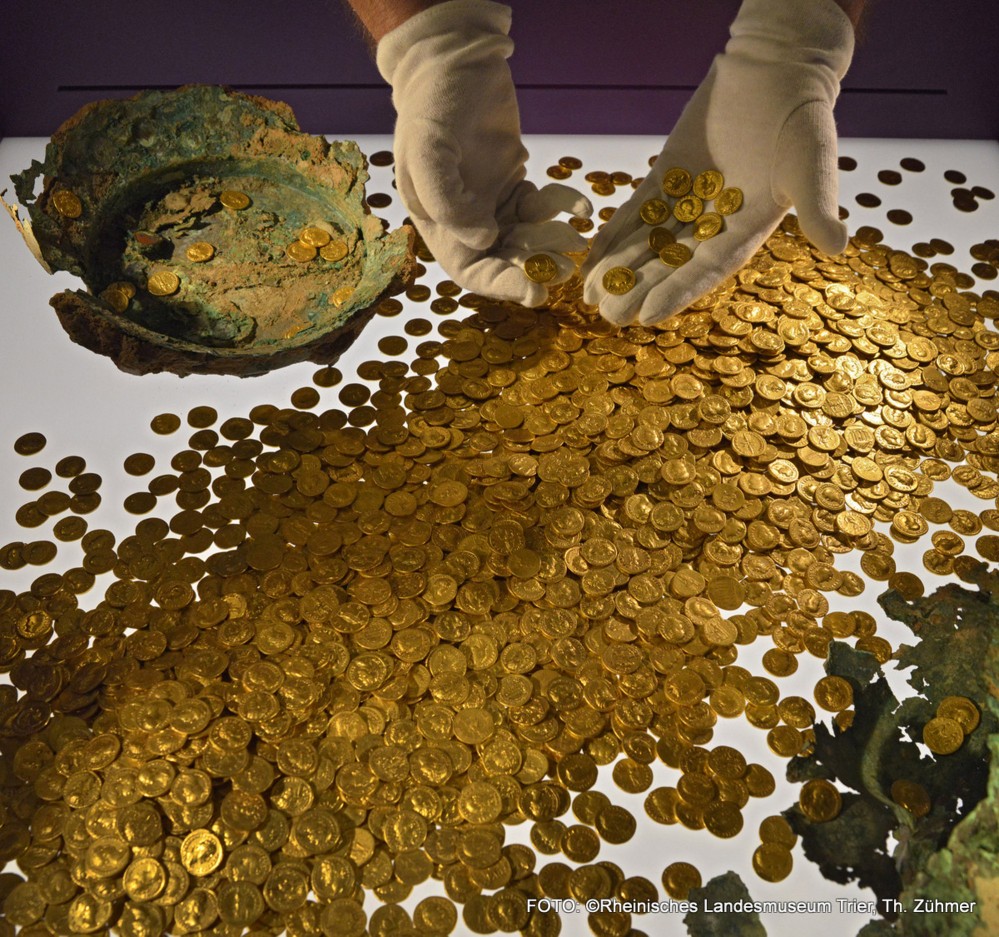
The Discovery of the Trier Gold Hoard
In September 1993, construction workers in Trier were carrying out routine excavations when they stumbled upon a remarkable find. Buried beneath the city’s streets, they uncovered a massive cache of gold coins, a total of 2,516 to be exact, weighing a staggering 18.5 kilograms (40.8 pounds). The sheer size and significance of the discovery immediately captured the attention of archaeologists and historians, who quickly recognized the importance of this remarkable find.
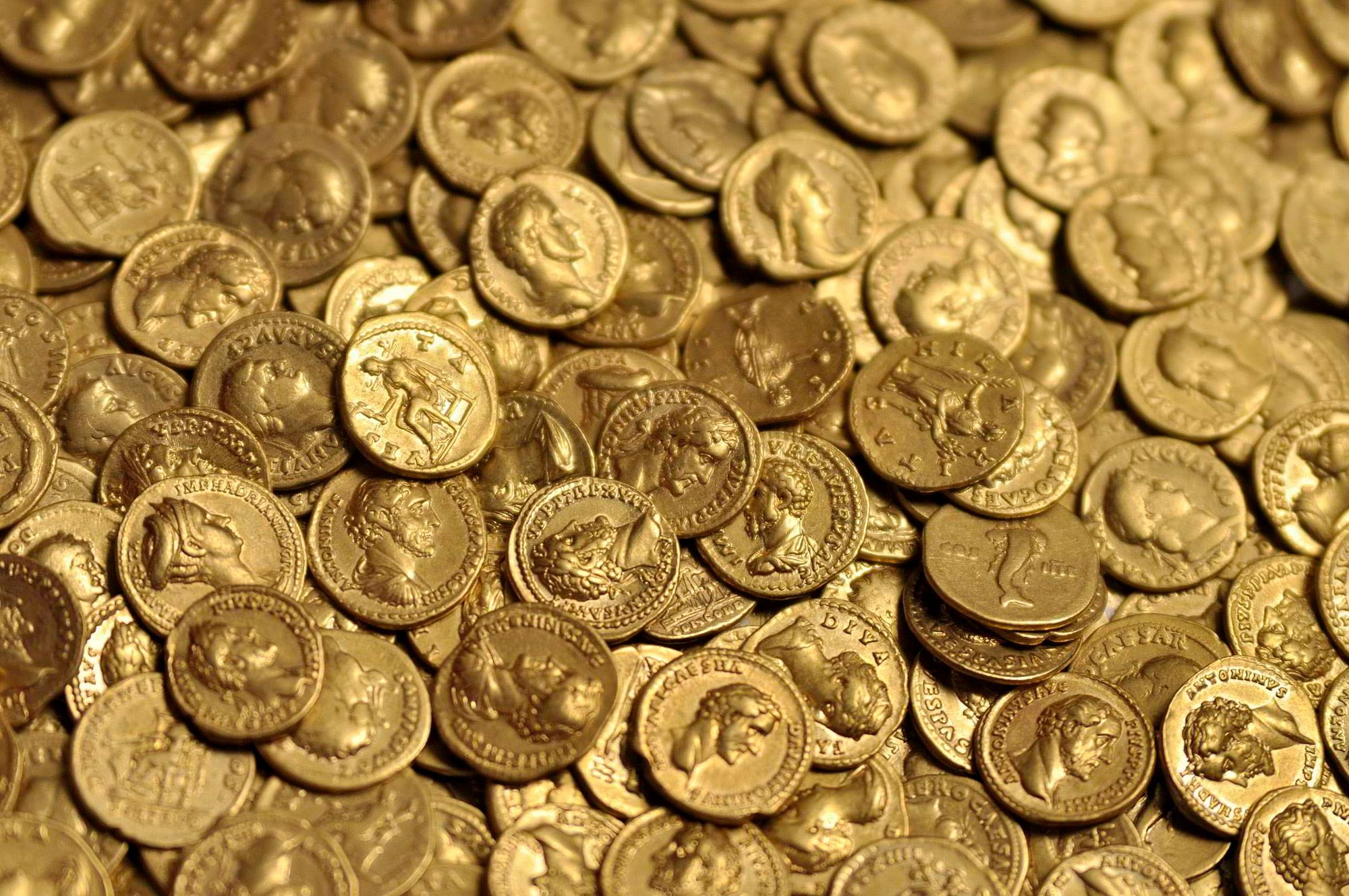
The Significance of the Trier Gold Hoard
The Trier Gold Hoard is not just any ordinary collection of ancient coins; it is the largest preserved Roman gold hoard in the world. This remarkable treasure trove provides a unique window into the past, offering valuable insights into the political, economic, and social dynamics of the Roman Empire during a tumultuous period in its history.
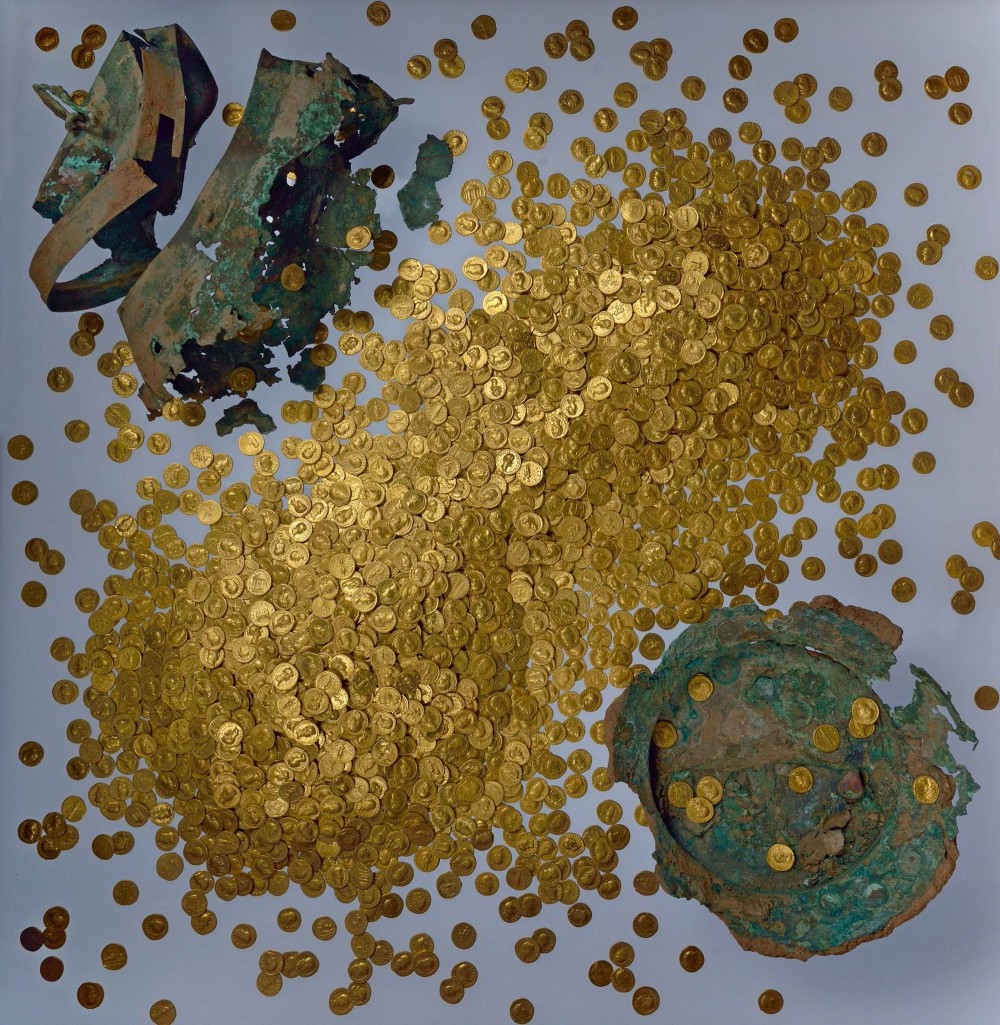
An Official Treasury, Not a Personal Fortune
Upon closer inspection, it became clear that the Trier Gold Hoard was not simply the personal fortune of a wealthy individual, but rather an official treasury. The careful administration and growth of the collection over time suggest that this was a carefully curated and maintained repository of wealth, likely belonging to the Roman government or military.
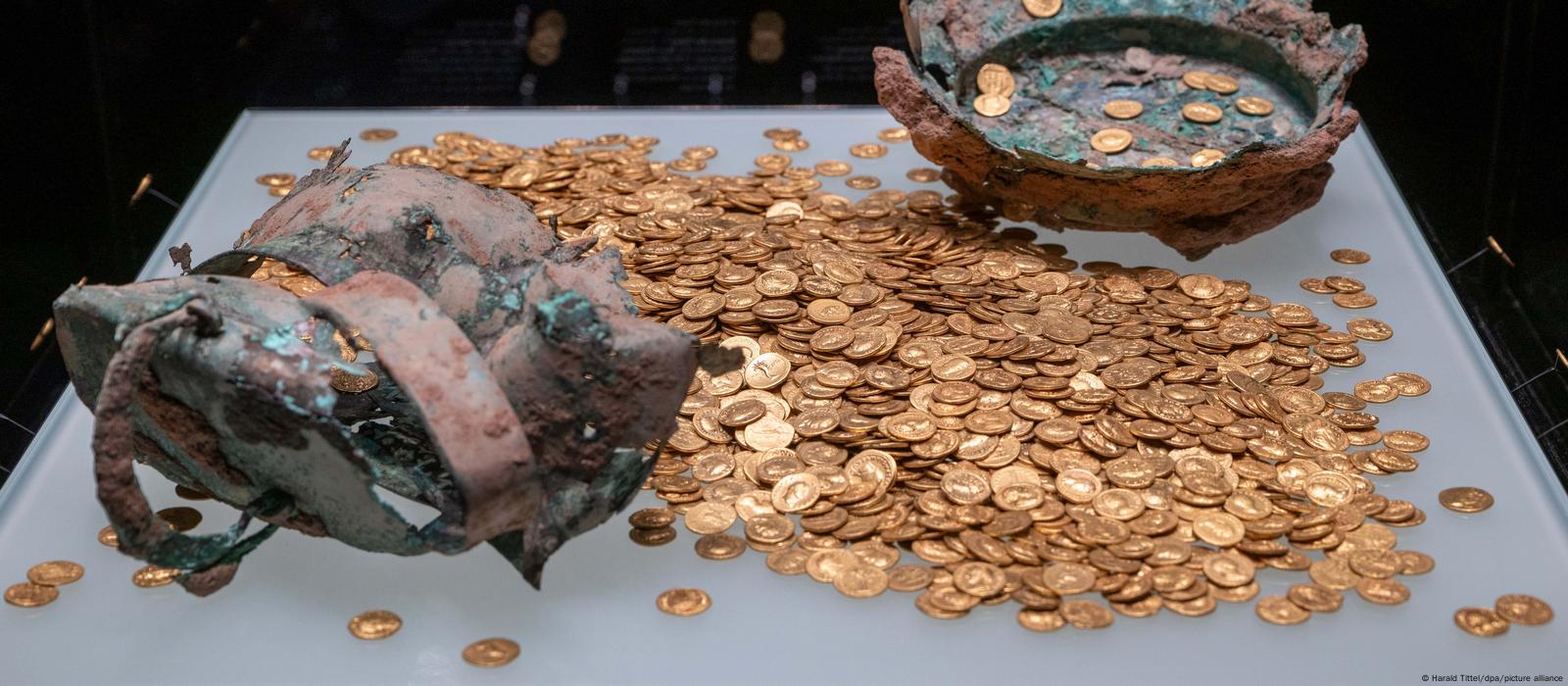
The Annual Salary of 130 Roman Soldiers
The Trier Gold Hoard is estimated to have been equivalent to the annual salary of around 130 Roman soldiers, a staggering sum that underscores the immense wealth and resources of the Roman Empire. This finding not only highlights the importance of the hoard but also provides valuable insights into the economic and military structures of the time.
27 Emperors, Empresses, and Imperial Family Members
The coins in the Trier Gold Hoard feature a remarkable diversity of Roman rulers, with a total of 27 emperors, empresses, and members of the imperial family represented. This breadth of representation is a testament to the longevity and complexity of the Roman Empire, as well as the importance of the treasury itself.
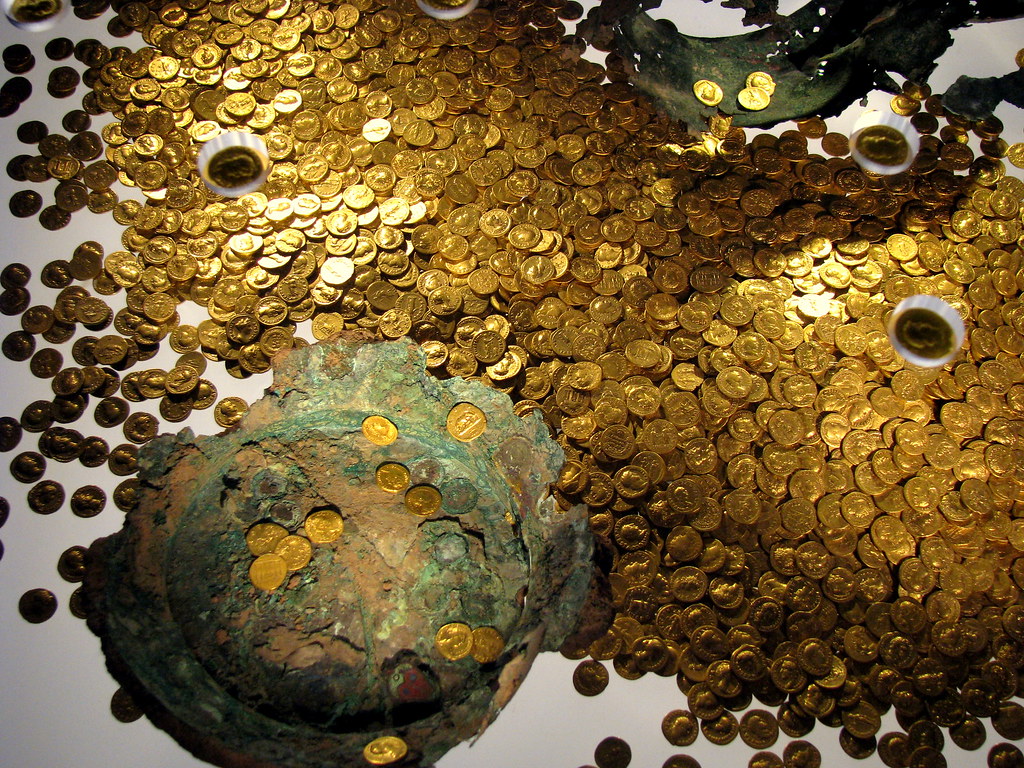
The Historical Context: The Civil War of 196 AD
The Trier Gold Hoard was buried during a tumultuous period in Roman history, known as the Year of the Five Emperors in 196 AD. This civil war saw several contenders vying for the imperial throne, with Septimius Severus ultimately emerging victorious. It is believed that the Trier Gold Hoard was hastily buried in a cellar during this conflict, as the city of Trier was caught in the crossfire.
The Significance of the Coin Designs
The coins within the Trier Gold Hoard are not only valuable for their sheer quantity and historical significance but also for the intricate designs and imagery they bear. These aurei, or gold coins, provide a wealth of information about the Roman Empire, its rulers, and the cultural and artistic traditions of the time.
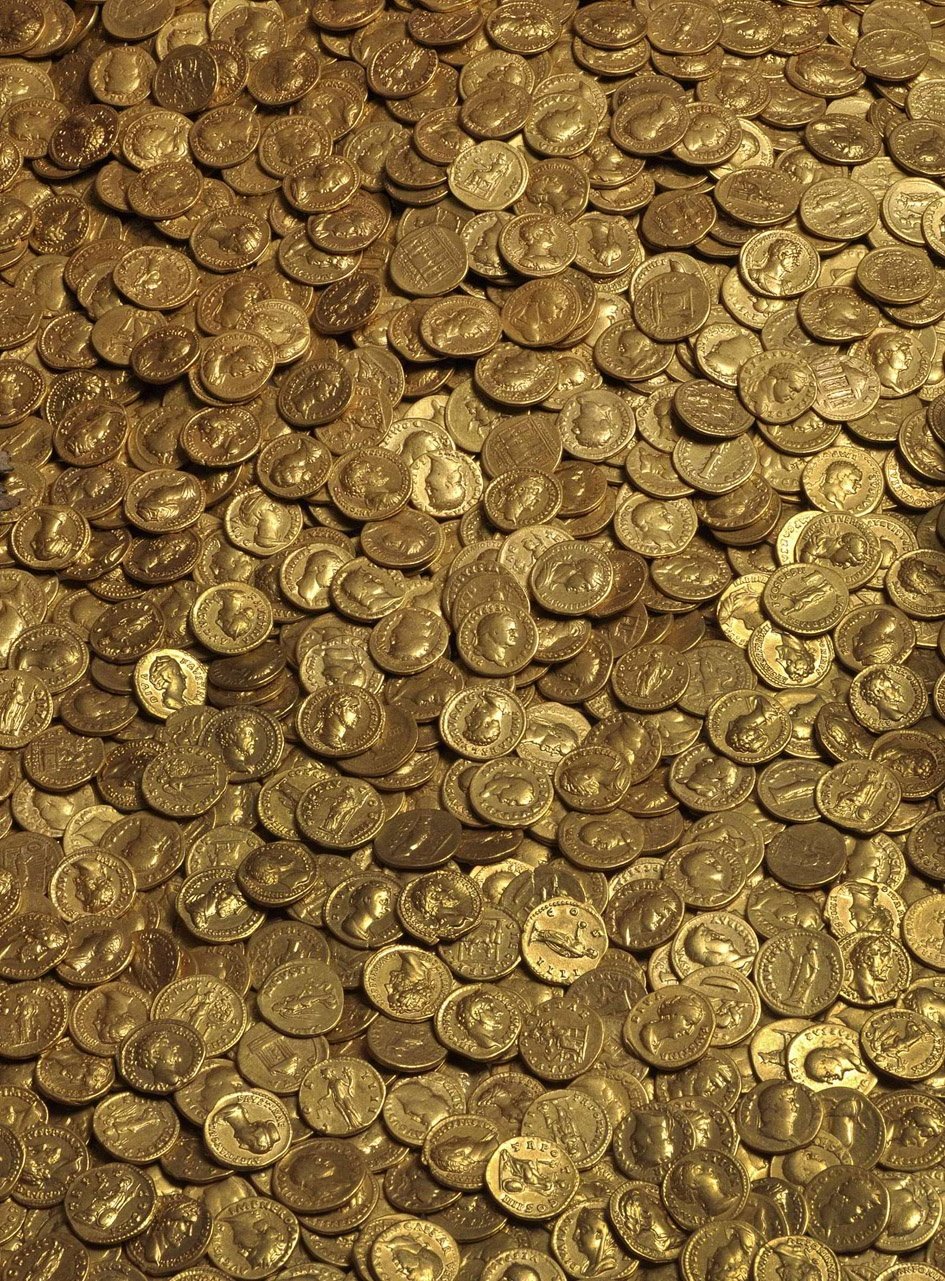
Portraits of Emperors and Empresses
One of the most striking features of the Trier Gold Hoard coins is the detailed portraits of the various Roman emperors and empresses. These images offer a glimpse into the visual representation of power and authority within the empire, as well as the artistic styles and techniques employed by Roman minters.
Symbolic Imagery and Legends
In addition to the portraits, the coins also feature a rich array of symbolic imagery and legends. These elements provide valuable insights into the ideological and propagandistic messaging of the Roman state, as well as the cultural and religious beliefs of the time.
Unique and Rare Coins
Among the Trier Gold Hoard’s vast collection, some coins are considered unique or exceptionally rare, further adding to the hoard’s significance and value. These one-of-a-kind pieces offer a tantalizing glimpse into the past, challenging our understanding of Roman numismatics and the complexities of the empire’s history.
The Trier Gold Hoard Today
The Trier Gold Hoard is now housed in the Rheinisches Landesmuseum in Trier, where it can be viewed by the public. This remarkable collection has become a source of immense pride for the city of Trier and a testament to the enduring legacy of the Roman Empire.

Ongoing Research and Scholarship
The Trier Gold Hoard continues to captivate scholars and researchers, who are constantly exploring new avenues of inquiry. From examining the coins’ metallurgical composition to analyzing the political and economic implications of the hoard, the treasure trove offers a wealth of opportunities for further study and understanding.
Public Engagement and Education
The Trier Gold Hoard has also become a valuable educational resource, inspiring visitors to learn more about the Roman Empire and the complexities of its history. The museum’s exhibits and educational programs provide a unique opportunity for the public to engage with this remarkable piece of ancient history.
Conclusion
The Trier Gold Hoard is a remarkable and awe-inspiring treasure, a testament to the grandeur and complexity of the Roman Empire. Its discovery in 1993 has captivated historians, numismatists, and the public alike, offering a unique window into the past and shedding light on the political, economic, and social dynamics of the Roman world. As the Trier Gold Hoard continues to be studied and explored, it promises to reveal even more of the secrets and stories that have been buried for nearly 1,800 years.

